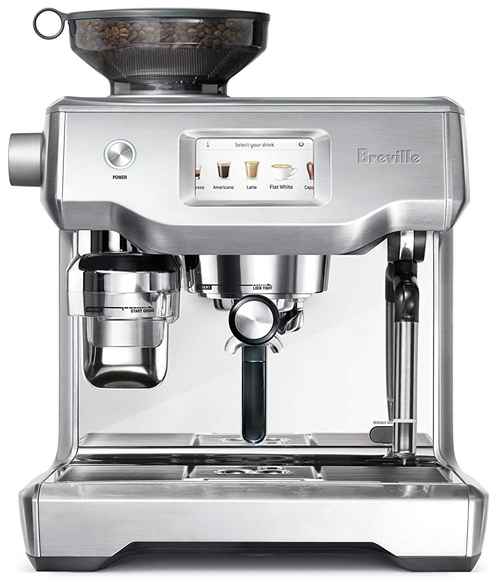Hazelnut Latte Starbucks Recipe [+Tips]
Note: This page contains affiliate links.
As an Amazon Associate, I earn from qualifying purchases when you click on the link, but you are not charged extra.
Oh, the Hazelnut Latte from Starbucks – it’s basically the perfect hug in a cup. Imagine rich, robust espresso mingling with velvety steamed milk, kissed by the warm, nutty aroma of hazelnut syrup. It’s one of those drinks that feels like a cozy treat no matter the season. Whether you’re starting your day or winding down in the afternoon, this latte has that magical ability to brighten moments and satisfy cravings.
- Old World Christmas Beans: Tastes like the holidays in every cup — discover the cozy magic of Old World Christmas Beans before the season slips away.
- Kirkland Sumatra French Roast : Dark, bold, and wildly smooth—why Kirkland’s Sumatra French Roast is the best-kept secret of serious coffee drinkers.
- Hot Fudge Whole Bean Coffee : What happens when dessert meets coffee? Meet the decadent whole bean that tastes like hot fudge—but better.
- Aroma Ridge Guatemala Antigua Medium Roast : From the highlands of Guatemala to your morning mug—this rich, balanced roast is waking up coffee lovers everywhere.
- Juan Valdez Cumbre Colombian Coffee : Crafted by Colombia’s most iconic coffee legend—why Cumbre is a must-try for fans of bold, authentic flavor.
Starbucks’ Hazelnut Latte isn’t just about flavor; it’s about experience. The combination of creamy milk and fragrant hazelnut syrup creates a taste that’s both comforting and a little indulgent. But hey, why spend a fortune when you can whip up this deliciousness yourself? Making this latte at home means you can adjust sweetness, milk type, and espresso strength exactly how you like it. Plus, it’s fun – and who doesn’t love playing barista for a bit?
So, if you’re ready to impress yourself (and maybe a few friends), let’s jump right into the essentials: the ingredients.
- 1 Ingredients For Hazelnut Latte Starbucks Recipe
- 2 How To Make Hazelnut Latte Starbucks?
- 3 Expert Tips
- 4 Recipe Variations
- 5 Final Words
- 6 FAQs
- 6.1 What Ingredients Are Needed To Make A Starbucks-style Hazelnut Latte?
- 6.2 How Much Hazelnut Syrup Should I Use In My Hazelnut Latte?
- 6.3 Can I Make A Hazelnut Latte At Home Without An Espresso Machine?
- 6.4 What Type Of Milk Works Best For A Hazelnut Latte?
- 6.5 How Do I Steam Milk Properly For A Latte At Home?
- 6.6 Is The Starbucks Hazelnut Latte Served Hot Or Iced?
- 6.7 Can I Make A Sugar-free Version Of The Hazelnut Latte?
- 6.8 What Is The Typical Caffeine Content In A Starbucks Hazelnut Latte?
- 6.9 How Can I Make The Hazelnut Flavor More Intense In My Latte?
- 6.10 Are There Any Popular Variations Of The Hazelnut Latte At Starbucks?
Ingredients For Hazelnut Latte Starbucks Recipe
Here’s the magic lineup you’ll need to get that authentic Starbucks Hazelnut Latte vibe going:
-
Espresso Or Strong Brewed Coffee
- You want about 1-2 shots of espresso (1 ounce per shot). If you don’t have an espresso machine, a strong brewed coffee or a concentrated coffee from a moka pot works beautifully.
-
Milk of your choice (whole milk recommended for creaminess)
- Around 8 ounces. You can use skim, 2%, oat milk, almond milk, or soy – it’s totally up to your preference. Oat milk is especially trendy because it froths well and tastes naturally sweet.
-
Hazelnut Syrup
- This is the star of the show! Starbucks uses a specific branded syrup, but any good quality hazelnut-flavored syrup will do. About 1 to 2 tablespoons per cup, depending on your sweetness craving.
-
Sweetener (optional)
- If you like it sweeter than the syrup alone, you can add a teaspoon of sugar, honey, or any sweetener you love.
-
Whipped Cream (optional But Recommended)
- For that decadent finishing touch, a dollop of whipped cream on top really amps up the indulgence.
-
Cocoa Powder Or Cinnamon (optional Garnish)
- A light dusting for extra flavor and a pretty presentation.
All these ingredients combine to create that unmistakable Hazelnut Latte flavor, and the great thing is – they’re all easy to find at your local grocery store or online.
How To Make Hazelnut Latte Starbucks?
Okay, here’s where the fun begins – making your own Hazelnut Latte! I’m going to walk you through each step like we’re chatting over coffee, making sure you get that barista-level magic at home.
-
Brew Your Espresso Or Strong Coffee
- Start by making your espresso shots using an espresso machine, stovetop moka pot, or any strong coffee method you prefer. The key is a rich, intense coffee base.
-
Warm And Froth Your Milk
- Pour your milk into a small saucepan or a microwave-safe container and heat it until steaming (not boiling!). Use a handheld frother or whisk vigorously to create that lovely foam. If you have a steam wand, even better!
-
Combine Hazelnut Syrup And Espresso
- Pour your brewed espresso into your favorite mug, then add the hazelnut syrup. Stir well to mix that nutty sweetness right into the coffee.
-
Add The Frothed Milk
- Slowly pour the steamed milk over the espresso and syrup mixture. Hold back the foam with a spoon, then spoon it on top once you’re done pouring the milk. That foam layer is essential!
-
Optional: Top With Whipped Cream And Garnish
- For extra indulgence, crown your latte with a generous swirl of whipped cream and a sprinkle of cocoa powder or cinnamon.
And voilà – you have your very own Hazelnut Latte, just like Starbucks but homemade and tailored to your taste buds!
Expert Tips
If you really want to elevate your Hazelnut Latte game, here are some insider nuggets to know:
-
Use Fresh, Quality Espresso Beans
- Freshly ground beans make a world of difference. Look for a medium roast with nutty undertones to complement the hazelnut syrup.
-
Don’t Overheat Your Milk
- Milk should be around 150°F (65°C). Too hot, and it tastes burnt; too cool, and it won’t froth properly.
-
Try Making Your Own Hazelnut Syrup
- If you want to get creative, making syrup from scratch with sugar, water, and hazelnut extract is surprisingly simple and super fresh-tasting.
-
Froth Plant-based Milks Carefully
- Almond and soy milk tend to froth less than dairy or oat milk. Use barista blends if you can find them – they’re designed to froth better.
-
Experiment With Espresso-to-milk Ratio
- Some like a stronger coffee flavor, others prefer creamier. Adjust shots or milk amounts to find your perfect balance.
-
Serve Immediately
- Lattes are best enjoyed fresh – the foam and flavor can degrade if it sits too long.
Recipe Variations
Love the Hazelnut Latte but want to switch things up? Here are some fun spins:
-
Iced Hazelnut Latte
- Brew espresso, add hazelnut syrup, pour over ice, then top with cold milk. Perfect for hot days!
-
Hazelnut Mocha Latte
- Add a tablespoon of chocolate syrup along with the hazelnut syrup for a chocolaty twist.
-
Vegan Hazelnut Latte
- Use oat or almond milk and vegan whipped cream or skip the cream altogether.
-
Hazelnut Matcha Latte
- Combine matcha green tea powder with steamed milk and add a splash of hazelnut syrup for a nutty twist on a classic.
-
Spiced Hazelnut Latte
- Sprinkle in a pinch of cinnamon or nutmeg into the milk while frothing for a warming seasonal vibe.
The hazelnut latte is super versatile – feel free to mix and match these ideas to suit your mood!
Final Words
Making a Hazelnut Latte at home isn’t just about replicating a Starbucks favorite – it’s about creating a moment of joy and indulgence tailored just for you. The aroma, the texture, the perfect balance of coffee and hazelnut sweetness – it all comes together in one beautiful cup. Plus, knowing you crafted it yourself? That’s some serious satisfaction.
Whether you stick to the classic recipe or venture into variations, this latte is a fantastic way to bring a little café magic into your daily routine without breaking the bank or leaving your house.
FAQs
What Ingredients Are Needed To Make A Starbucks-style Hazelnut Latte?
To make a Starbucks-style hazelnut latte, you will need espresso, steamed milk, hazelnut syrup, and optional whipped cream for topping.
How Much Hazelnut Syrup Should I Use In My Hazelnut Latte?
Typically, Starbucks uses about 3 pumps (around 1.5 ounces) of hazelnut syrup for a standard 16-ounce (Grande) hazelnut latte, but you can adjust according to taste.
Can I Make A Hazelnut Latte At Home Without An Espresso Machine?
Yes, you can use strong brewed coffee or a concentrated coffee like a Moka pot or AeroPress brew as a substitute for espresso, then add steamed milk and hazelnut syrup.
What Type Of Milk Works Best For A Hazelnut Latte?
Whole milk is traditionally used for a creamy texture, but you can also use 2%, skim, or plant-based alternatives like oat, almond, or soy milk depending on your preference.
How Do I Steam Milk Properly For A Latte At Home?
Heat milk on the stove or microwave until warm but not boiling (around 150°F/65°C). Froth it using a handheld frother, French press, or whisk until you get a creamy foam.
Is The Starbucks Hazelnut Latte Served Hot Or Iced?
Starbucks offers both hot and iced versions of the hazelnut latte, so you can make either by adjusting milk temperature and serving over ice if desired.
Can I Make A Sugar-free Version Of The Hazelnut Latte?
Yes, you can use sugar-free hazelnut syrup or make your own using sugar-free sweeteners, and opt for unsweetened milk alternatives to reduce sugar content.
What Is The Typical Caffeine Content In A Starbucks Hazelnut Latte?
A Grande (16 oz) Starbucks hazelnut latte contains about 150 mg of caffeine, coming mainly from the two shots of espresso.
How Can I Make The Hazelnut Flavor More Intense In My Latte?
Increase the amount of hazelnut syrup, or add a small amount of hazelnut extract in addition to syrup, but be careful as the extract can be potent.
Are There Any Popular Variations Of The Hazelnut Latte At Starbucks?
Yes, popular variations include adding caramel drizzle, making it iced or blended, using different milk types, or combining with other flavors like vanilla or mocha for a customized drink.

